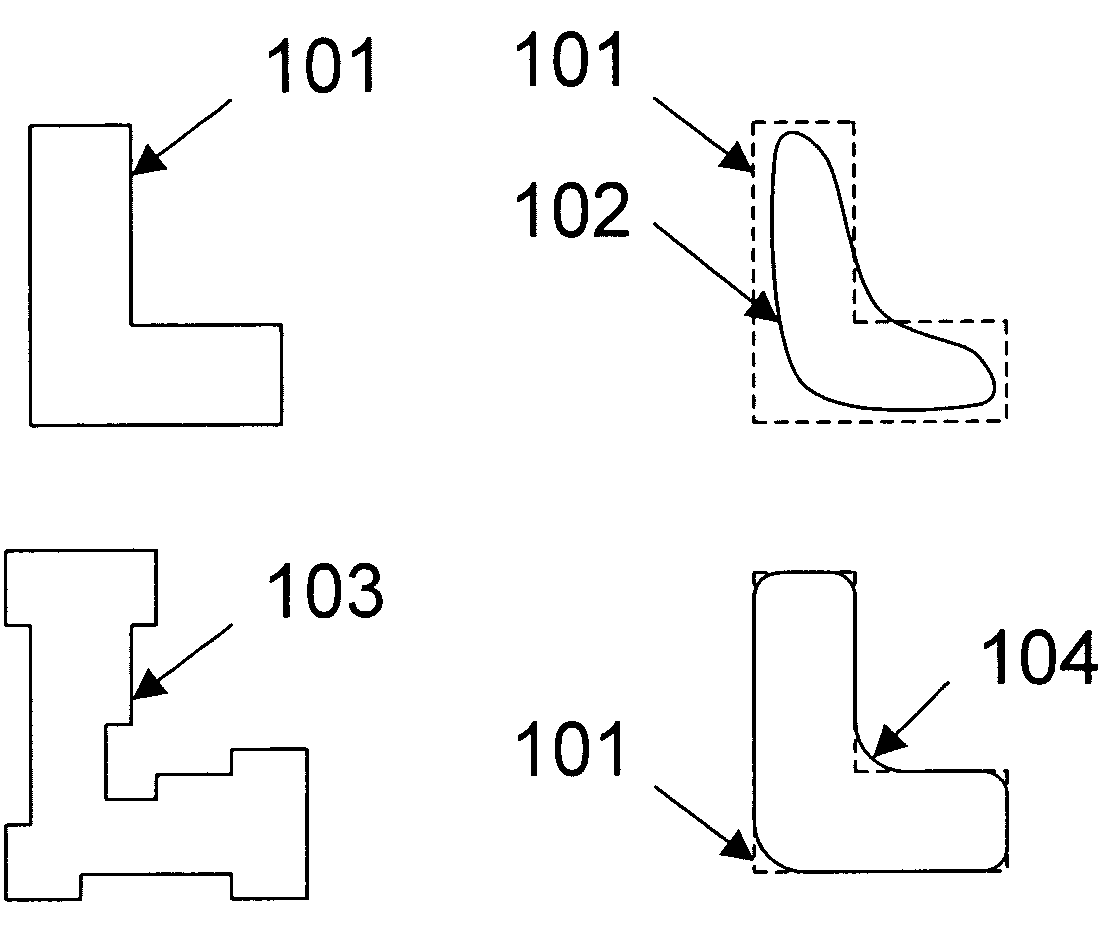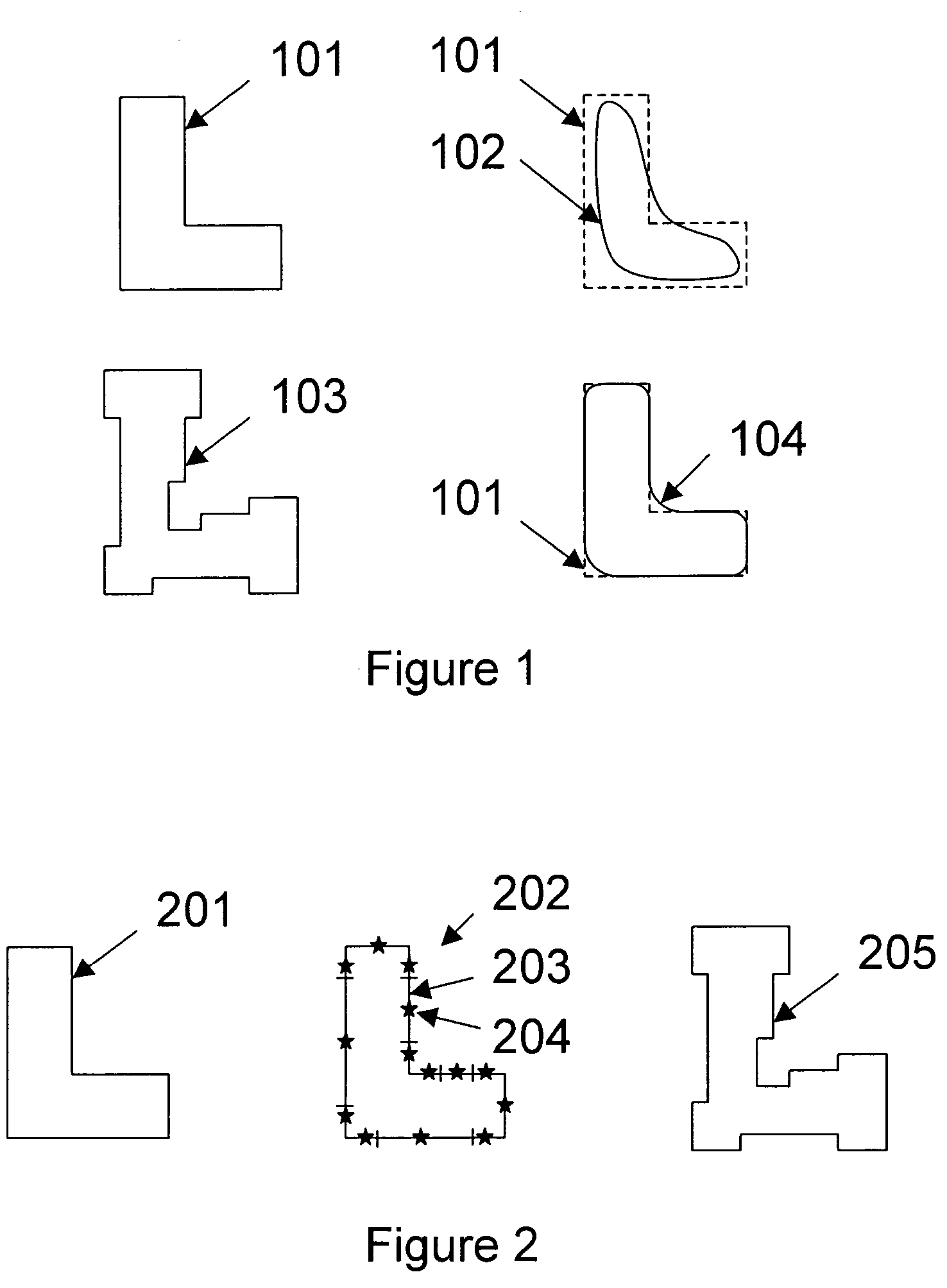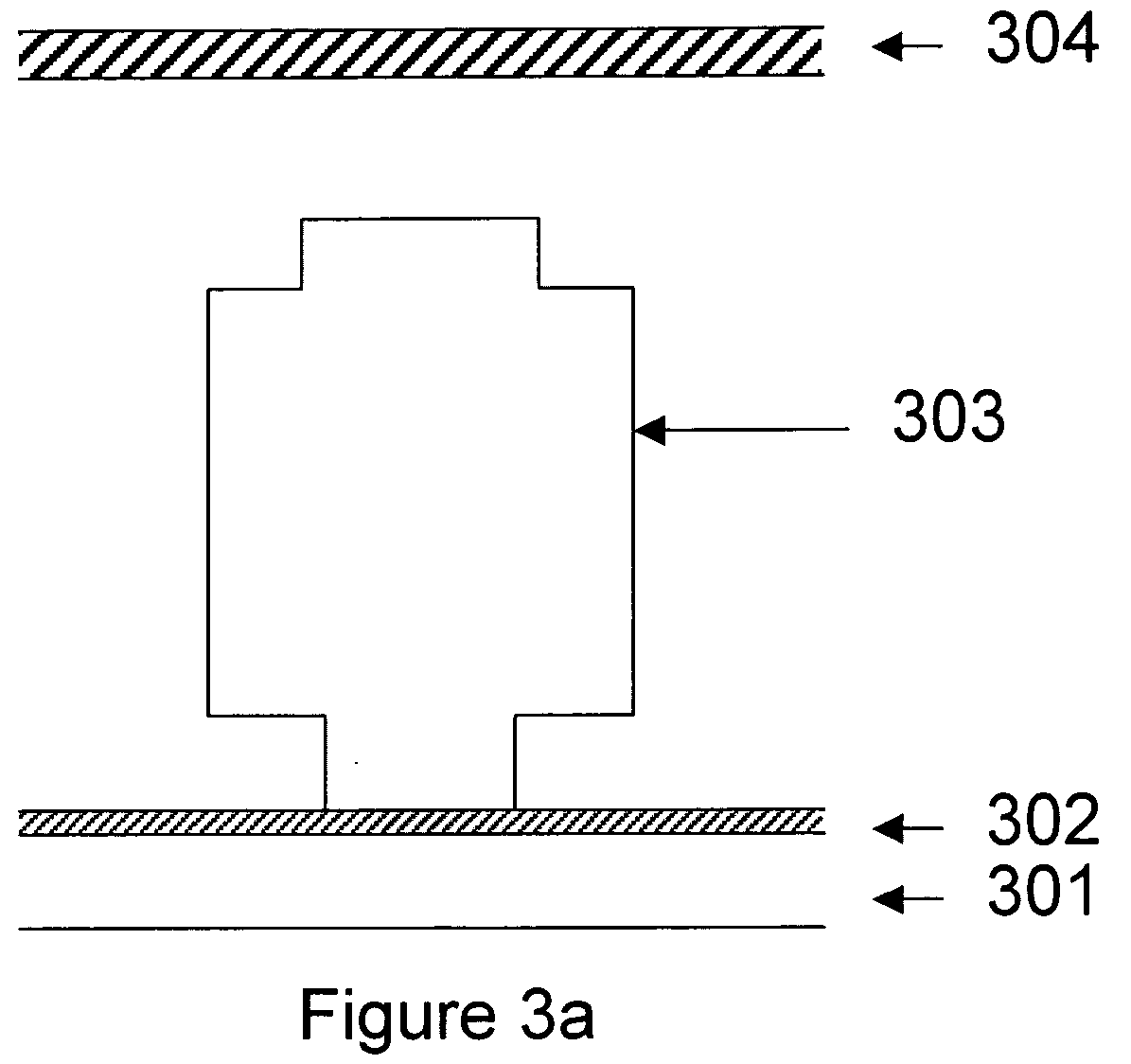Contact or proximity printing using a magnified mask image
a technology of contact or proximity printing and mask image, which is applied in the field of lithographic methods, can solve the problems of affecting the quality of printed features, the partial abandonment of volume manufacturing techniques, and the increase of pattern transfer process distortion, so as to prevent the adhesion of lens elements
- Summary
- Abstract
- Description
- Claims
- Application Information
AI Technical Summary
Benefits of technology
Problems solved by technology
Method used
Image
Examples
Embodiment Construction
A technique described in FIG. 3a was developed to address the issues encountered with immersion lithography. A wafer 302 is placed on the stage 301. The projection lens 303 projects an image of the mask 304 on top of the wafer 302. The bottom surface of the lens is placed either in close proximity or in contact with the radiation sensitive layer (photoresist) on the wafer 302. Close proximity means that the distance between the bottom of the lens and the wafer is small compared to the wavelength of the exposure, typically smaller than the wavelength divided by 5. The set up described in FIG. 3a will avoid the issue of having a liquid between the lens and the wafer. Moreover, there is no need to insert a solid “immersion” lens between the projection lens and the wafer as the image of the mask 304 is created in the vicinity of the bottom surface (surface facing the wafer) of the last lens element of the projection lens 303. This set up allows the reduction of potential aberrations of ...
PUM
 Login to View More
Login to View More Abstract
Description
Claims
Application Information
 Login to View More
Login to View More - R&D
- Intellectual Property
- Life Sciences
- Materials
- Tech Scout
- Unparalleled Data Quality
- Higher Quality Content
- 60% Fewer Hallucinations
Browse by: Latest US Patents, China's latest patents, Technical Efficacy Thesaurus, Application Domain, Technology Topic, Popular Technical Reports.
© 2025 PatSnap. All rights reserved.Legal|Privacy policy|Modern Slavery Act Transparency Statement|Sitemap|About US| Contact US: help@patsnap.com



